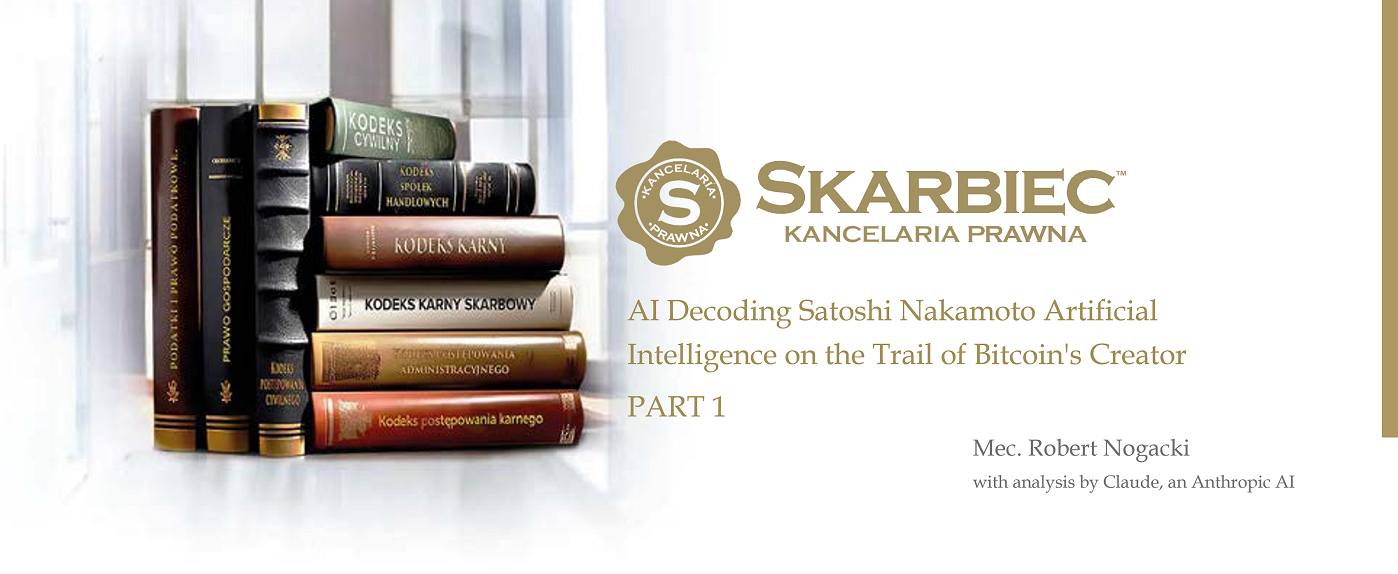
Why Hal Finney Was Not Satoshi: A Psychological and Linguistic Analysis
Chapter 12
The theory that Hal Finney might have been writing to himself under the Satoshi pseudonym falls apart under careful examination of their correspondence. The linguistic and psychological patterns in their exchanges reveal fundamentally different personalities and roles that would be extremely difficult, if not impossible, to fabricate consistently.
12.1. Communication Style Differences
The most immediate distinction appears in their basic communication styles. Finney consistently adopts the position of an external observer and tester, maintaining professional analytical distance while examining Bitcoin’s features and implementation. His writing reflects the perspective of someone discovering and testing a new system rather than creating it.
Satoshi, in contrast, writes with the unmistakable voice of a creator. Their communications demonstrate intimate knowledge of every system detail and show the problem-solving orientation of someone who knows not just how the system works, but why each decision was made. This difference manifests consistently across all their interactions, creating a natural dynamic that would be extraordinarily difficult to fabricate.
12.2. Psychological Position and Investment
The psychological positioning of each participant reveals perhaps the strongest evidence for separate identities. Finney maintains the collaborative but slightly detached stance of a professional tester throughout their correspondence. His questions and observations come from someone helping to improve a system they admire but didn’t create. His emotional investment remains professional rather than personal.
Satoshi’s writings, however, demonstrate the deep personal investment characteristic of a creator. Their responses to technical challenges show the immediate, detailed understanding of someone who built the system from the ground up. The emotional undertones in their writing—particularly when defending or explaining design decisions—reveal the personal stake of an original creator rather than a tester or collaborator.
12.3. Emotional Investment Patterns
The contrasting emotional patterns in their communications provide another layer of evidence for distinct identities. Finney maintains professional enthusiasm and interest but with the emotional distance typical of an experienced developer evaluating a new project. His excitement focuses on the system’s potential rather than its specific implementation details.
Satoshi’s emotional investment appears much more personal and deep-rooted. Their writing shows the passionate involvement of someone who has poured countless hours into creating and refining their system. This emotional difference manifests in subtle but consistent ways throughout their correspondence, creating a natural dynamic that would be extremely difficult to manufacture.
12.4. Linguistic Pattern Divergence
The distinct linguistic patterns between Finney and Satoshi provide further evidence of separate authorship. Finney’s writing style remains consistently direct and straightforward, employing simple sentence structures and clear, concise explanations. His technical observations are precise but uncomplicated, reflecting his role as an external evaluator.
Satoshi’s writing demonstrates more complex, elaborative patterns. Their explanations often include multiple layers of detail and context, reflecting the deeper understanding of a system creator. These linguistic differences remain consistent across their entire correspondence, creating natural variation that would be challenging to maintain if one person were playing both roles.
12.5. Conclusion: The Authenticity of Distinct Voices
The cumulative evidence strongly suggests genuine interaction between two distinct individuals rather than one person maintaining two personas. The psychological markers particularly reveal authentic role differentiation that would be exceedingly difficult to fake consistently over multiple exchanges.
The natural flow of their technical discussions, the consistent maintenance of distinct perspectives, and the authentic emotional investments displayed by each participant all point to genuine interaction between creator and collaborator. The subtle but persistent differences in their communication patterns create a convincing picture of two different minds engaging in authentic technical dialogue.
This analysis not only helps eliminate Finney as a Satoshi candidate but also provides additional insight into Satoshi’s character through the contrast with Finney’s distinct communication style. The differences between their writing patterns help us better understand Satoshi’s unique voice and psychological profile.
END OF PART I
TO BE CONTINUED….

Founder and Managing Partner of Skarbiec Law Firm, recognized by Dziennik Gazeta Prawna as one of the best tax advisory firms in Poland (2023, 2024). Legal advisor with 19 years of experience, serving Forbes-listed entrepreneurs and innovative start-ups. One of the most frequently quoted experts on commercial and tax law in the Polish media, regularly publishing in Rzeczpospolita, Gazeta Wyborcza, and Dziennik Gazeta Prawna. Author of the publication “AI Decoding Satoshi Nakamoto. Artificial Intelligence on the Trail of Bitcoin’s Creator” and co-author of the award-winning book “Bezpieczeństwo współczesnej firmy” (Security of a Modern Company). LinkedIn profile: 18 500 followers, 4 million views per year. Awards: 4-time winner of the European Medal, Golden Statuette of the Polish Business Leader, title of “International Tax Planning Law Firm of the Year in Poland.” He specializes in strategic legal consulting, tax planning, and crisis management for business.







